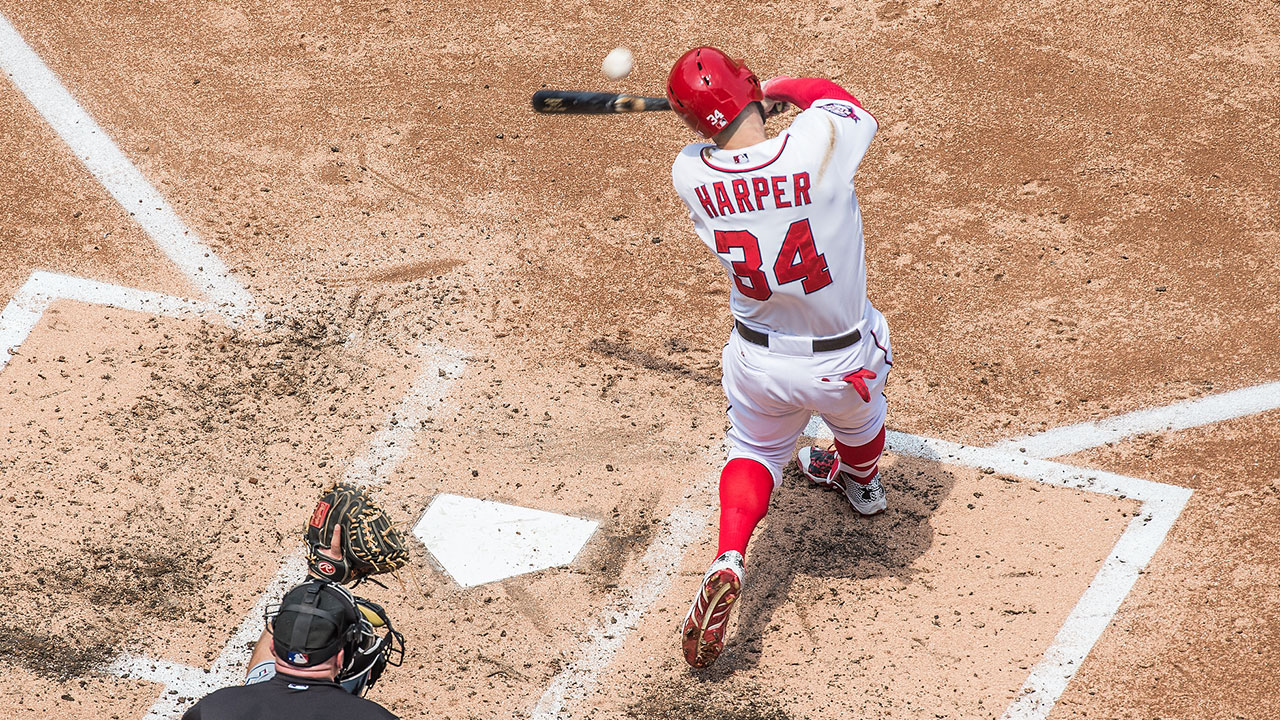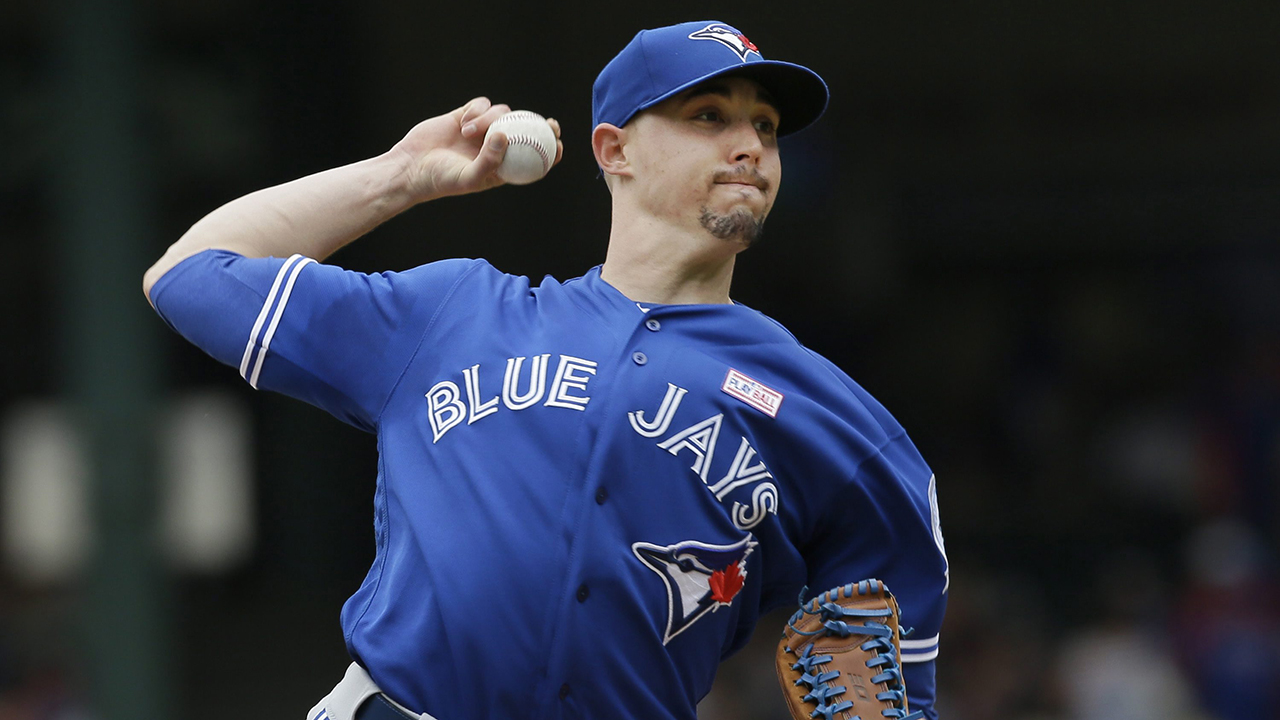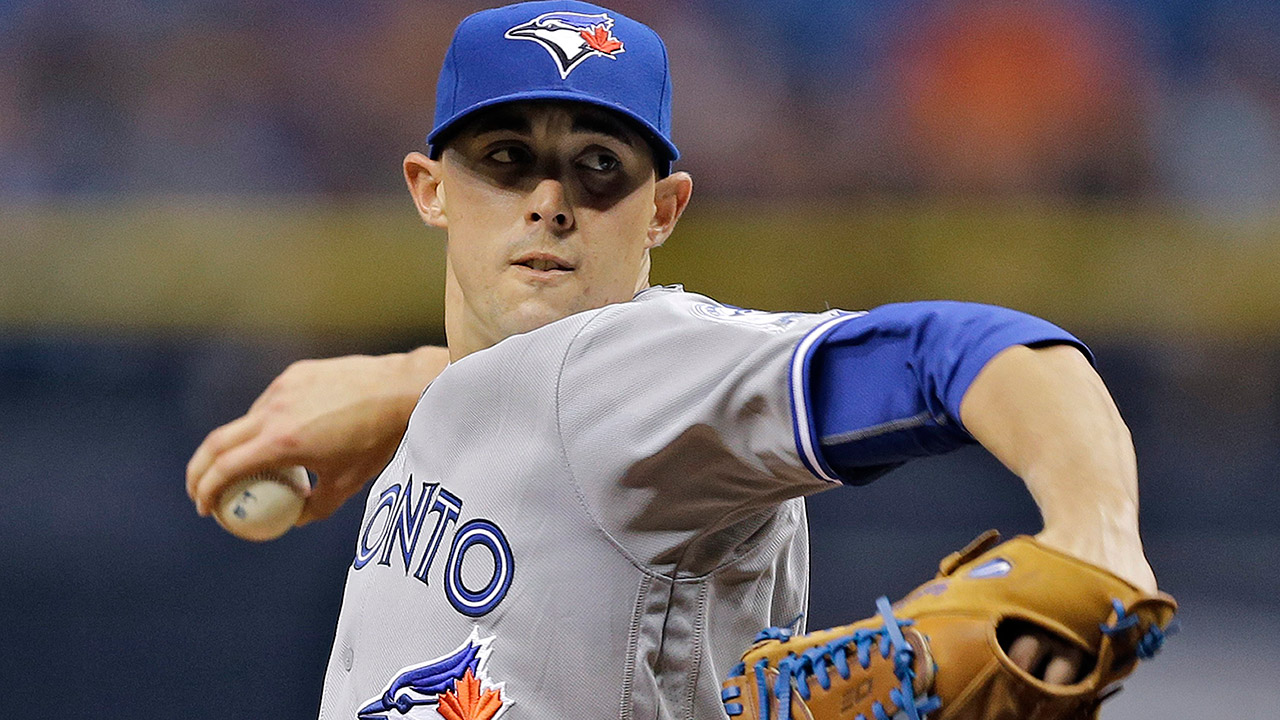When Bryce Harper launched a scoreboard-shattering home run into the right-field stands during a game at Nationals Park in mid-April, something peculiar happened: Partway through his home-run trot, Harper abruptly stopped and reversed course. “Harper missed first base!” yelled Charlie Slowes, the Washington Nationals’ radio play-by-play announcer. “He goes back, he retouches. And then he’ll touch ’em all!”
As it turned out, Harper maybe hadn’t missed first base after all—he later explained that he’d tagged the bag with the back of his heel but, wary of how the replay might look, opted to return for insurance. The attention to detail was understandable: Harper had just hit his 100th career home run, making him the eighth-youngest player to reach the milestone. It also happened to be the 23-year-old’s first major-league grand slam—so you can forgive him for overthinking the moment.
Last year’s National League MVP—he was the youngest player ever to win the award unanimously—has been making headlines and earning accolades since he entered the league as a 19-year-old. The Las Vegas native is on a well-publicized campaign to “make baseball fun again.” He also wants to get paid. In recent months, Harper’s been the subject of debate about the possibility that—given his performance, his position as arguably the face of the game and his representation by uber-agent Scott Boras—he could land a record-breaking deal in the vicinity of $500 million when he reaches free agency after the 2018 season. It seems clear that Harper will set a new benchmark, but is he really worth half a billion dollars?
Harper’s ability to land such a deal rests partly in his already-historic talent and partly in his timing. Several MLB player agents who spoke to Sportsnet for this story called it a “perfect storm” of factors: Harper will reach free agency following the end of his age-25 season, which means his best years should still be ahead of him. And the right-fielder’s arrival on the market will come at a time when there’s more money in baseball—and more data about player performance—than ever before.
Making the case for the extraordinary nature of Harper’s career to date is easy. Since his call-up in 2012, when he won Rookie of the Year honours, he has appeared in the All-Star Game in every season except 2014 (he’d injured his thumb in April of that year and required surgery). In 2015, Harper’s WAR of 9.5 was the highest of any player in the majors. His OPS+ of 197 last year—97 percent better than the league average—ranks second amongst 22-year-olds since the start of baseball’s modern era in 1901 (Harper is one spot behind Ted Williams’s 1941 season, and a spot ahead of Ty Cobb’s 1909 performance).
If you expand that list to the top-10 OPS+ seasons by players 24 years old and younger, Harper comes in eighth all-time. Every other player on that list—including Williams, Cobb, Lou Gehrig, Babe Ruth, Jimmie Foxx and Mickey Mantle—is in the Hall of Fame, with the exception of Shoeless Joe Jackson, who is ineligible as a result of the Black Sox scandal.
While Harper’s performance already puts him in elite company, half a billion dollars might seem like an absurd figure. If so, it’s helpful to consider what precedent there could be for that kind of valuation. The most jaw-dropping contract in the history of baseball was signed in 2001, when a 25-year-old Alex Rodriguez, who’d spent his entire career with the Seattle Mariners, inked a 10-year, $252-million deal with the Texas Rangers. At the time, the biggest contract across all four major North American sports belonged to Kevin Garnett, who’d signed a six-year, $162-million deal with the NBA’s Minnesota Timberwolves in 1997.
A-Rod’s contract wasn’t just unprecedented—it was considered way, way out of line in terms of what teams were prepared to spend on player salary. It took seven years for baseball to see a comparable deal, and that one happened to belong to A-Rod once again—a 10-year, $275-million extension he signed with the New York Yankees in 2008 (the team had acquired him via trade after three seasons in Texas).
Rodriguez’s two monster contracts might not have had an initial ripple effect on player salaries, but a handful of elite players eventually caught up to the high-water mark he’d set for average annual value. In 2014, L.A. Dodgers left-hander Clayton Kershaw bested Rodriguez’s average annual sum when he signed a seven-year, $215-million extension with his team. Since then, Miguel Cabrera, Max Scherzer, David Price and Zack Greinke have all signed contracts with an average annual worth of at least $30 million.
In terms of total value, though, only Miami Marlins slugger Giancarlo Stanton’s $325-million contract has topped either of Rodriguez’s deals. But while that deal—the largest single sports contract in history—is a whopping $175 million below the mark some think Harper could reach, it’s clear why: Stanton’s contract included concessions in exchange for buying out his two remaining arbitration years.
Because teams are now armed with a much more expansive set of data about the value of a player’s performance, it’s conceivable that, in 2018, a franchise could offer Harper a deal that’s not only bigger than anything we’ve ever seen, but longer, too (MLB remains the only league without a salary cap or a limit on contract length). “We know significantly more than we knew back when A-Rod was signed,” says Vince Gennaro, director of Columbia University’s master of science program in sports management and president of the Society for American Baseball Research (or SABR, the organization from which sabermetrics takes its name). “I think that will allow teams to make a more informed decision on whether they want to spend the money to bring Harper in.”
Harper’s on-field talent isn’t his only selling point. In May, the outfielder agreed to an extension on his endorsement deal with Under Armour for an undisclosed sum; it was reported to be the largest endorsement deal ever signed by a baseball player. Harper’s marketability—his passionate, fun-loving, sometimes goofy, sometimes irreverent behaviour, and yes, his carefully coiffed hair—makes him an appealing candidate for a large-market team with the means to afford his services.
No other player in the game today shares both Harper’s marquee value and his apparent appetite for the spotlight. Mike Trout, one year older and the other generational talent of the current era, seems far less interested in attention. His own historic numbers aside, the Angels centre-fielder isn’t much of a headline-maker. Even his lone public personality quirk—his obsession with the weather—seems a little grandfatherly compared to Harper’s interests (which, judging by his Instagram account, include Fruity Pebbles, ice cream cones and a seemingly dangerous propensity for taking selfies while driving).
For a sport desperate to attract a younger fan base, a player with Harper’s gusto—he loves a good celebration and has lashed out at the so-called purists intent on upholding the game’s unwritten rules—might well be worth the ridiculous price tag. “He really represents a lot of the young generation of baseball fans,” says Gennaro. “If you’re one of the teams that believes this is a potentially viable piece of the puzzle that could make you a contending team for a window of years, then you start to look at factors like popularity, fan affinity, attitudes toward him and things like that, because that could, in the end, justify the dollars you’re going to pay.”
While it’s likely that Harper will set a record when he signs his next deal—whether in terms of average annual value, overall money or both—exactly how eye-popping it will be might be affected by the terms of the next collective bargaining agreement (the luxury-tax threshold, for example, could increase from the current mark of $189 million). Mostly, though, it’s up to Harper. Provided he stays healthy and continues to perform at around the same level, his options appear almost limitless. He could sign an extension with the Nationals, take a shorter deal worth more per year than anything we’ve ever seen, or shoot for a contract of unprecedented length.

A key factor in Harper’s decision-making is Boras, the most successful sports agent in history, who has represented Harper throughout his professional career. Boras’s involvement means that the superstar is less likely to sign an extension with his current team. He has a habit of taking his clients to free agency, since they’re able to command the most money by testing the open market.
That’s not to say that Boras’s clients never opt to sign extensions. In May, Harper’s teammate Stephen Strasburg, also repped by Boras, signed a seven-year, $175-million extension with Washington. The signing was surprising because of when it happened—after spring training, during the final season of his deal and in a year when the free-agent pool for starters is looking very shallow. Strasburg likely would have gotten more as a free agent, though it’s possible the 27-year-old right-hander’s top priority was staying with the team that drafted him No. 1 overall in 2009.
As much as Nationals fans might hope that Harper will follow in his teammate’s footsteps and opt to remain with the team that took him first overall the year after selecting Strasburg, the outfielder has hinted at an eagerness to see what he might be worth to the 29 other teams in the league. When Harper appeared on Washington radio station 106.7 The Fan in February, he was asked about the possibility of signing a history-making $400-million deal in a few years’ time. “I just try to play the years out and do everything I can to help my team win,” Harper responded. “But don’t sell me short. That’s what you’re doing right now to me. So don’t do that.”
If anything, even the $500-million mark might ultimately be low. With the rise of opt-outs amongst a certain class of player contracts, it’s possible that Harper could sign a monster deal, opt out after a few years, then sign another deal, thereby extending the overall term and dollar value.

The only wrench in that plan could be the state of baseball revenues down the road. “As revenues grow, salaries grow more or less proportionately,” says Andrew Zimbalist, a professor of economics at Smith College. “Baseball revenues, in my view—and revenues of all the team sports—have gone through a very rapid period of growth, and I don’t see that growth continuing.”
Zimbalist believes changes in telecommunications technology and the ways in which viewers consume games are likely to put pressure on sports marketing rights. In other words, the period of explosive growth in lucrative television contracts has probably come to an end. “The way the structures of the industry have changed over the past 15 years or so has been very propitious for sports television rights,” he says, “but I don’t think that will continue.”
If baseball revenues don’t grow at the pace we’ve seen in recent years, perhaps teams will be reluctant to sign on for a landmark deal. Zimbalist, for one, thinks the half-billion-dollar figure is unlikely. “I don’t see it now, and I don’t see it in five years,” he says. “And I’m not surprised that agents would throw those numbers out, because it’s in their interests to always raise expectations and always hype up the bidding for their players.”
But as A-Rod’s deal shows, sometimes a club will put up an out-of-this-world number anyway—especially if a team owner is dead set on signing a particular superstar, as was the case with then–Rangers owner Tom Hicks. Of course agents would like to point to whatever number Harper reaches as a kind of benchmark, but those who spoke with Sportsnet admit that Harper is a wild card. It will likely take another generational talent to exceed whatever figure he reaches.
Maybe the more interesting question turns out to be not whether Harper will land half a billion dollars, but what it’ll do to his star power if he gets that kind of money. It can be tricky to remember A-Rod’s persona before fans started to view him as a walking, talking pile of cash—and before his legacy was complicated by steroids. But there was a time, before he’d reached free agency, when Rodriguez enjoyed the kind of relatively uncomplicated stardom Harper is accustomed to today. “He was super approachable, friendly, co-operative. He was charismatic,” says Larry Stone, a sports columnist with the Seattle Times who was around for all but A-Rod’s first season with the Mariners. “The fans loved him.”
Tyler Kepner, a baseball writer for the New York Times who covered Rodriguez’s penultimate year with the Mariners for the Seattle Post-Intelligencer, remembers him in those days as “a pure young talent who also seemed like he really was a great guy.” But the shadow of a potential departure loomed large, Kepner says. “The issue of how much he was going to be paid in his free agency was always hovering over him.”
When Rodriguez left for Texas and eventually returned to Seattle in a Rangers uniform, the fans who’d once loved him let him have it. “It was vicious, it was constant, it was absolute,” says Stone. “It was non-stop derision. People brought fake money. Every time he came to the plate, they threw it. To this day, every time A-Rod comes back, somebody brings the fake money and throws it from the top deck so it kind of flutters to the ground.”
Of course, Harper and A-Rod are different cases. But if Harper ends up with a contract bigger than anything we’ve ever seen, it will take a special kind of poise to face the haters he’s likely to attract. That’s especially the case if the guy they call “Bam-Bam” ends up with the Yankees, Dodgers or Red Sox, the teams most likely to pay him that kind of money.
Half a billion dollars might be a ridiculous sum—“No human being is worth that kind of money,” one agent remarked—but even if it’s ridiculous, it hardly seems unfair. Harper is a special case, and with the current benchmark for average annual value amongst marquee players being what it is, it’s easy to see why he might well ask for the moon and get it.
Some purists balk at the astronomical salaries the game’s biggest stars now command. If Harper earns his payday by leaving the Nationals, he might well end up a villain in the eyes of his current fans. For now, at least, he can bask in their adoration—as he did when he hit his 100th major-league home run. Those fans demanded a curtain call, and Harper obliged, emerging from the dugout for a brief appearance, squinting in the afternoon sun as he pumped his right arm skyward. The moment was captured in a widely circulated photograph that revealed one of sport’s iconic grins; Harper looks like the hero of some movie, forever locked in triumph in the final freeze-frame shot. Funny, since his story is only just beginning.


